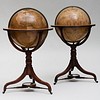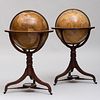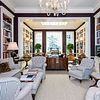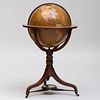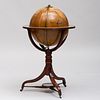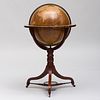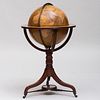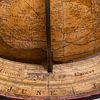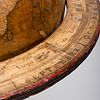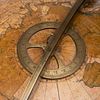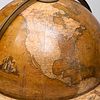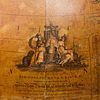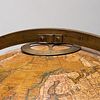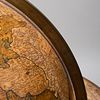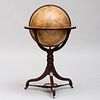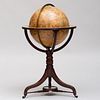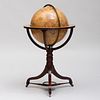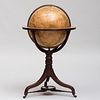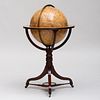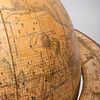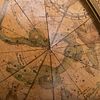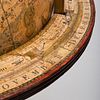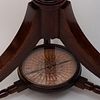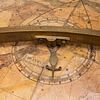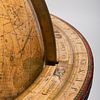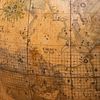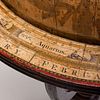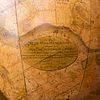Two Fine Regency Globes on Mahogany Stands, by William and Thomas M. Bardin
Bid Increments
| Price | Bid Increment |
|---|---|
| $0 | $25 |
| $200 | $50 |
| $500 | $100 |
| $3,000 | $250 |
| $5,000 | $500 |
| $10,000 | $1,000 |
| $30,000 | $2,500 |
| $100,000 | $5,000 |
Each with a cartouche, Sir Joseph Banks, Bart K.B., President of the Royal Society, this New British Terrestrial Globe...1807; The Rev. Nevil. Maskelyne, D.D.F.R.S, Astronomer royal, This New British Celestial Globe ...c. 1800. The terrestrial globe containing all the latest discoveries and communications from the most correct and authentic observations and surveys to the year 1799 by Capt. Cook.. engraved from an accurate drawing by Mr. Arrowsmith, Geographer...W. & T. M. Bardin...Additions to 1807-1814. The New British celestial globe, containing the positions of nearly 6000 stars, clusters, nebulae, planetary nebulae & c., correctly laid down to the present period from the latest observations...W. 7 T. Ma. Bardin (c 1800. Each globe measures 18 inch in diameter).
Both on identical floor stands with compass', raised on brass casters. Fitted with brass meridian rings, the terrestrial globe with brass hour circle at the north pole. The horizon circles for both globes have engraved paper zodiacal rings with calendar.
Bardin's 18 inch globes were the largest produced by this distinguished firm, and were among the finest globes available in the period, introduced in 1798. New revised editions were published until at least the 1820s. All editions were offered with a choice of furniture styles, of which those with mahogany floor stands, such as these were the most luxurious. Paired examples of Bardin's 18 inch globes are almost never offered on the market, particularly with the original tripod stands. A similar pair can be seen at the Smithsonian Museum in Washington, D.C.
The geography of the terrestrial globe is up to date, and is largely taken from the work of Aaron Arrowsmith, the most accomplished mapmaker of the early 19th century. Arrowsmith's North American geography greatly influenced Lewis and Clark and Bardin shows the continent based on Arrowsmith on the eve of the publication of the discoveries of these great explorers. The discoveries of Hearne, Mackenzie, Cook and other great explorers of the preceding decades are also shown in detail. An excellent description of the celestial globe can be found in Dekker, taken from the example of the 1814 edition at the National Maritime Museum, Greenwich.
William Bardin and his son Thomas M. Bardin were important globe and instrument makers in the late 18th century. Both were professional cartographers and their globes show an elegance and style often lacking in their English competition.
42 x 24 in. diam.
